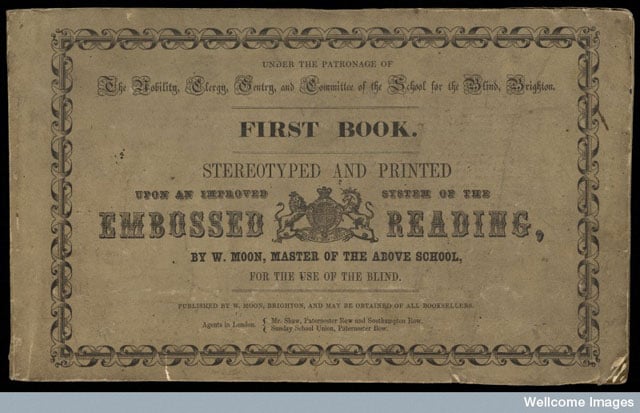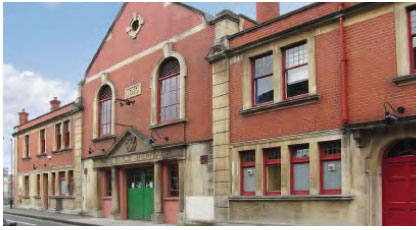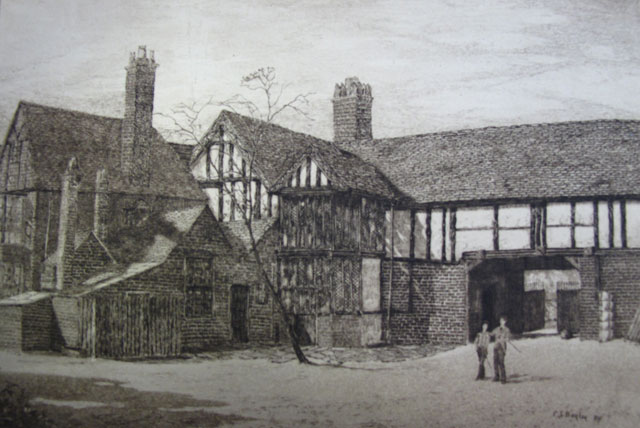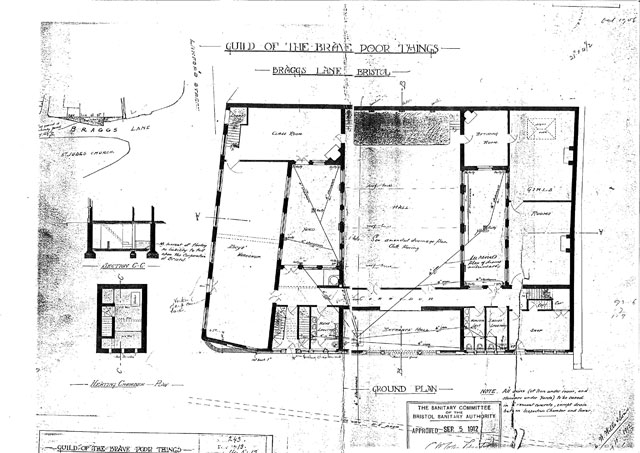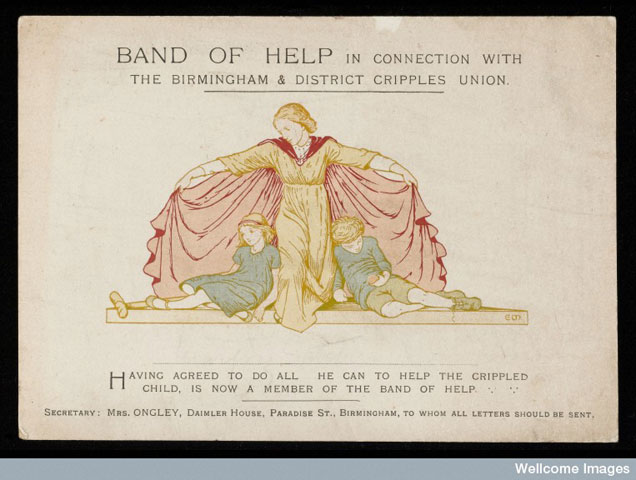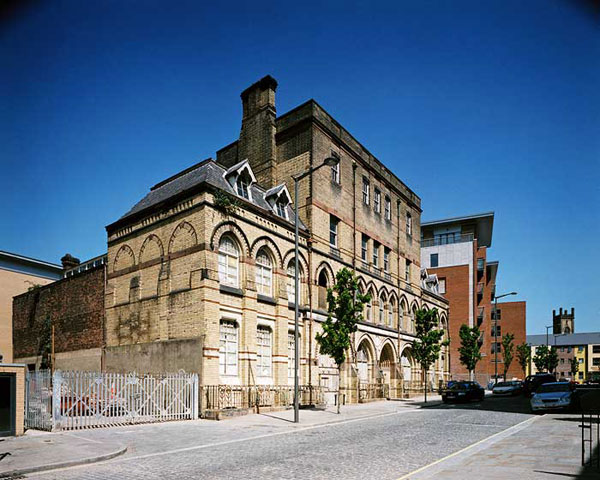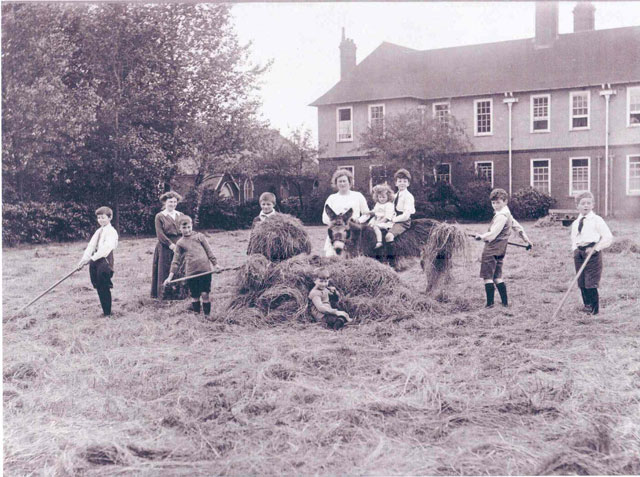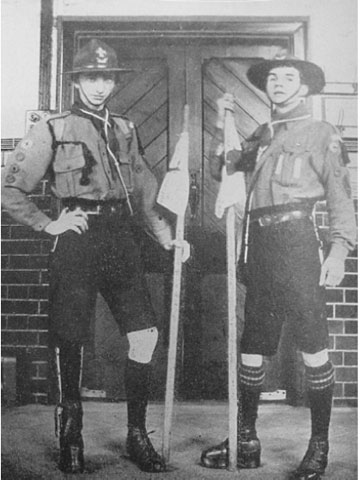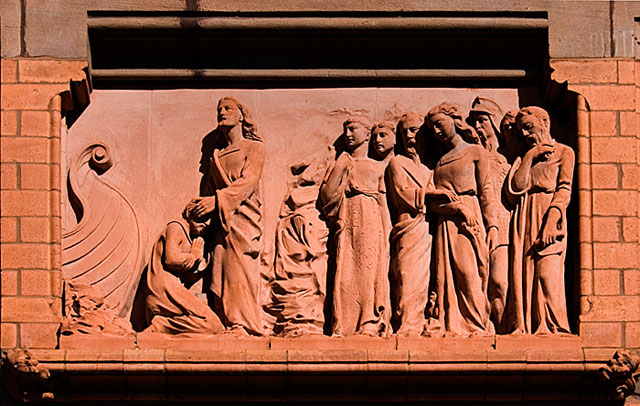The history of people with disabilities since 1050.
The Daily Life of Disabled People in Victorian England - Community, School and Charity
This section describes the increase in educational and charitable provision for disabled people who lived in their communities; it explains how some prospered while others continued to fight for survival and respect.
In this section
Audio version: 🔊 Listen to this page and others in 'Disability in the 19th century' as an MP3
Victorian attitudes to disability
In 1848 a religious advice pamphlet observed: "Some boys laugh at poor cripples when they see them in the street. Sometimes we meet a man with only one eye, or one arm, or one leg, or who has a humpback. How ought we to feel when we see them? We ought to pity them."
The writer had a sting in the tail for the jeering boys. While cripples might be made "bright and beautiful" by God on judgement day, wicked able-bodied children who laughed at them could be "burned in a fire that will never be put out". These were the ambivalent Victorian attitudes towards disability - a combination of fear, pity, discomfort and an idea of divine judgement.
Living in the community
The pull of the asylum and the workhouse was strong, but many thousands of people with disabilities stayed in their communities. The social investigator Henry Mayhew (1812-1887) described the disabled beggars of the London streets in 1862, including the "idiotic looking youth… shaking in every limb" and the "crab-like man without legs strapped to a board (who) walks upon his hands".
Some disabled people prospered. James 'deaf' Burke (1809-1845), also known as 'the deaf 'un', rose from poverty to become a world champion prize fighter. Henry Fawcett (1833-1884), blinded as a young man, became Postmaster-General in 1880; he introduced the parcel post and the postal order.
Education specialises
Educational provision for children and young people with disabilities grew rapidly. Literacy and education became as important as traditional vocational training.
In 1838 the London Society for Teaching the Blind to Read was formed and in 1866 the Worcester College for the Blind ('for the blind sons of gentlemen') became the world's first further education provision for disabled people.
In the 1890s, local authorities were empowered to set up day schools for blind, deaf, 'defective' and epileptic children. By 1899 there were 43 such schools in London alone, teaching 2,000 children - life in the asylum was not the inevitable route for everyone.
Charitable services
The Victorian era also saw a huge explosion in charitable activity. By the end of the century there were hundreds of organisations providing community or institutional services to disabled people.
There were charitable bodies for the blind, the 'deaf and dumb', 'lunatics', 'idiots', 'epileptics' and 'the deformed'. They offered education (Association for the Oral Instruction of the Dumb), work (Liverpool Workshops and Home Teaching Society for the Blind), hospital treatment (National Hospital for the Paralysed and Epileptic) and many other services.
In 1868 the British and Foreign Blind Association was formed by Dr Thomas Armitage, initially to promote the use of braille. It was to become the Royal National Institute for the Blind.
Outside the asylum
Many disabled people simply lived their lives purposefully in their communities. In 1894 the first branch of the Guild of the Brave Poor Things (motto: 'Happy in My Lot') was formed as a self-help group for people with physical disabilities. They described themselves as a group to "make life sweet for the blind and crippled folk of all ages".
Conveying a sense of pride and solidarity, they used popular military imagery of the period to create positive feelings about their disabilities, referring to themselves as "a great army of suffering ones". Their annual report in 1902 described how they "go out daily into a battle-field, where pain is the enemy to be met and overcome".
Outside the walls of the 19th century asylum, the daily battles for survival, fame or simple respect were fought in the towns and cities of England.
Watch the BSL video on daily life of disabled people in Victorian England
The Daily Life of Disabled People
Please click on the gallery images to enlarge.

